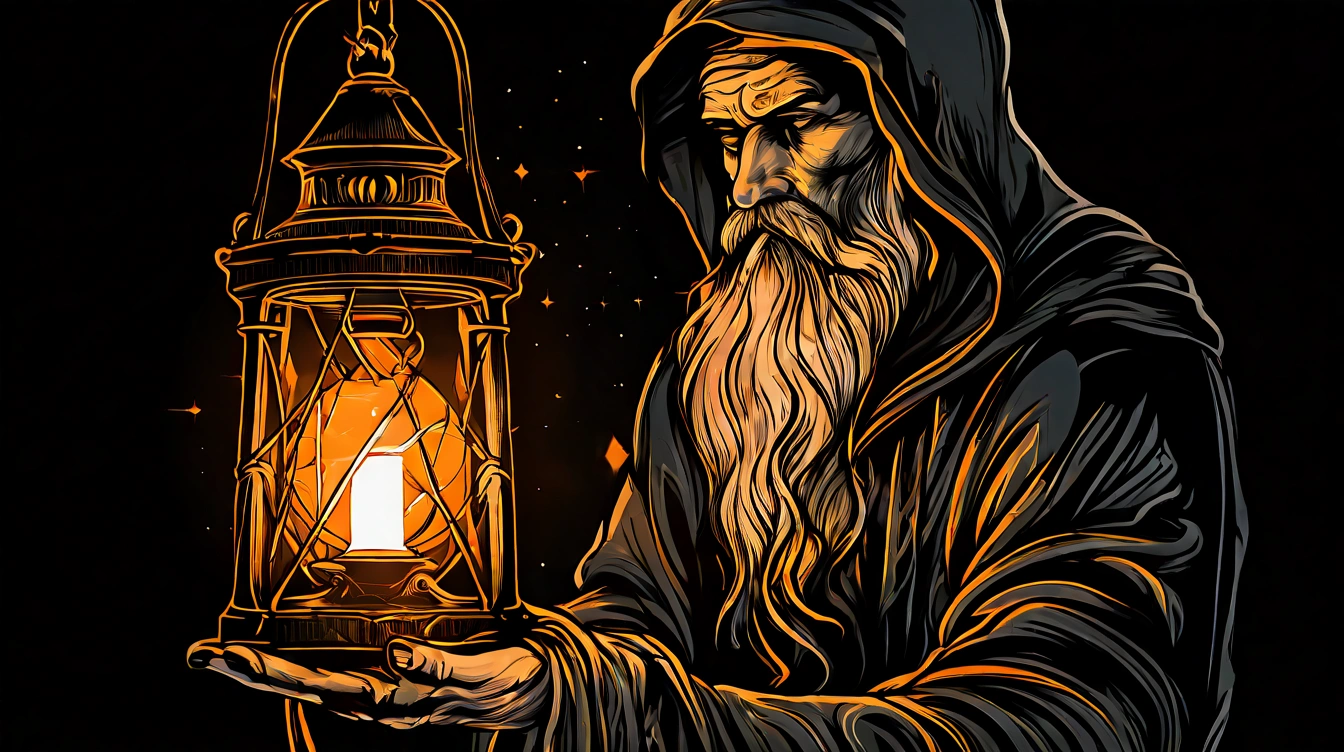What tattoo do you want and where would you put it?
I never thought about getting a tattoo… but if I were to have one, I’d like it to be deeply symbolic. Probably I would pick one based on the Tarot tradition. For example, one that symbolizes our quest into the unknown and the occult. I think I would make one based on The Hermit card, and would put it on my shoulder blade.
To help me out with ideas, I will reproduce below some of the cards from several Tarot decks. They will be accompanied by the symbolic meanings that their creators intended.
The Sage, or the Seeker of Truth and Justice, 1781
Ninth, the Hermit or the Sage, lantern in hand, seeking justice on the earth.
This design is from the work that started it all. Antoine Court de Gébelin wrote an essay on the Tarot cards. This essay was included in his Le Monde primitif, analysé et comparé avec le monde moderne. In English its title is “The Primeval World, Analyzed and Compared to the Modern World.”

Number IX shows a worthy philosopher in a long coat. A hood is on his shoulders. He goes bent on his stick and bears a lantern in his left hand. It is the Sage who seeks justice and virtue.
One thus imagines, based on this Egyptian painting, the story of Diogenes. He, with lantern in hand, seeks a man in full midday. The witty remarks, know-all epigrams, are of any century: and Diogenes was the man who enacted this scene.
Card makers made of this a wise hermit. It is rather well conceived: philosophers live in voluntary retirement. They separate themselves from those who are not cleansed from the frivolity of the times. Heraclitus appeared reckless to his dear Concitoyens. In the East, delivering oneself to speculative or hermetic sciences is almost the only choice. In this respect, the Egyptian hermits can’t approach those of the Indians, and in the temples of Siam, they all were or are like many Druids.
L’Hermite, Tarot de Marseille, 1600s / 2017
Look for the essence of things.
This Tarot deck from Yoav Ben-Dov is a restoration of the famous Tarot de Marseille.
This card is the Hermit from the Tarot, often linked to introspection, solitude, and guidance. Here’s a breakdown of its symbolism:
- The Hermit: Personify wisdom gained through experience and contemplation. He symbolizes a journey inward for self-discovery.
- The Lantern: Often depicted held by the Hermit, it signifies illumination, truth, and enlightenment. It suggests the search for deeper understanding and inner guidance.
- The Staff: Stands for stability and support during the journey of introspection. It can also symbolize a guide or teacher in both physical and spiritual realms.
- The Robes: The Hermit’s clothing is usually in muted or earthy tones. This style reflects his disconnection from the material world. It also shows his focus on inner truths.
- Isolated Environment: The setting often conveys isolation and solitude, emphasizing the importance of introspection away from distractions.
Together, these elements underscore themes of introspection, seeking truth, and personal growth through solitude and reflection.

The Hermit, Rider-Waite-Smith Tarot, 1909
- Element: Earth
- Astrological symbol: Virgo
- Hebrew letter: ט Tet

The variation from the conventional models in this card is simple. The lamp is not enveloped partially in the mantle of its bearer: it is fully exposed. The bearer blends the idea of the Ancient of Days with the Light of the World. It is a star which shines in the lantern. I have said that this is a card of attainment. To extend this conception, the figure is seen holding up his beacon on an eminence. Thus, the Hermit is not a wise man in search of truth and justice, as Court de Gébelin explained. Nor is he an especial example of experience, as a later explanation proposes. His beacon intimates that where I am, you also may be.
It is further a card which is often misunderstood. This occurs when it is linked to the idea of occult isolation, as if it protects personal magnetism against admixture. This is one of the frivolous renderings which we owe to Éliphas Lévi. The French Order of Martinism has adopted it. Some of us have heard a great deal about the Silent and Unknown Philosophy. It is enveloped by his mantle, away from the knowledge of the profane. In true Martinism, the significance of the term Philosophe inconnu was of another order. It did not refer to the intended concealment of the Instituted Mysteries. It was not about concealing their substitutes either. Like the card itself, it referred to the truth that the Divine Mysteries secure their own protection. This protection guards against those who are unprepared.
What would be your pick for a tattoo design and where would you put it? Leave that in the comments!

You must be logged in to post a comment.